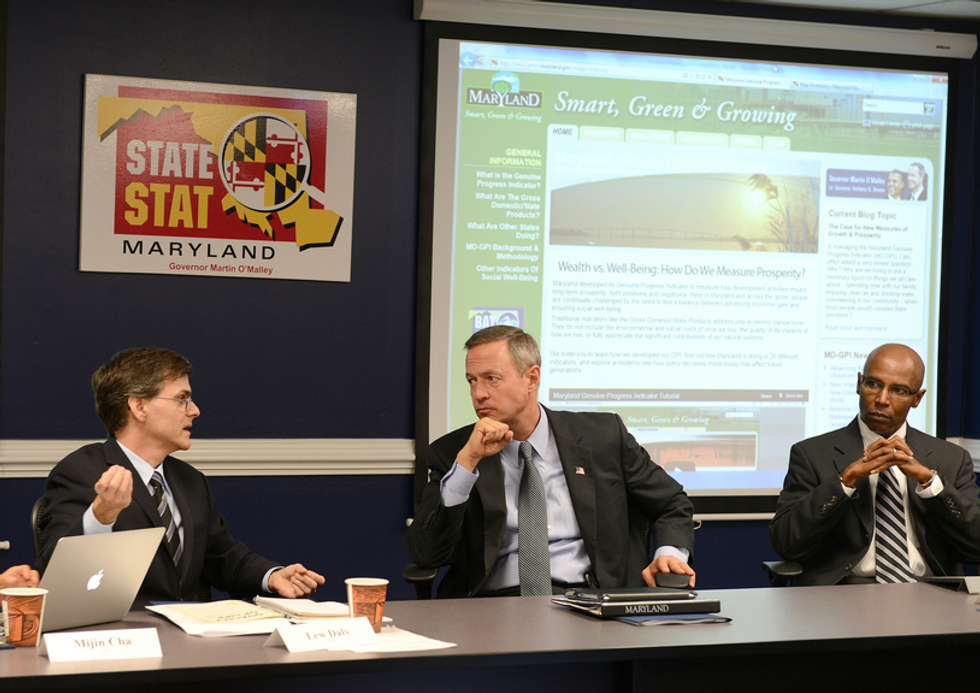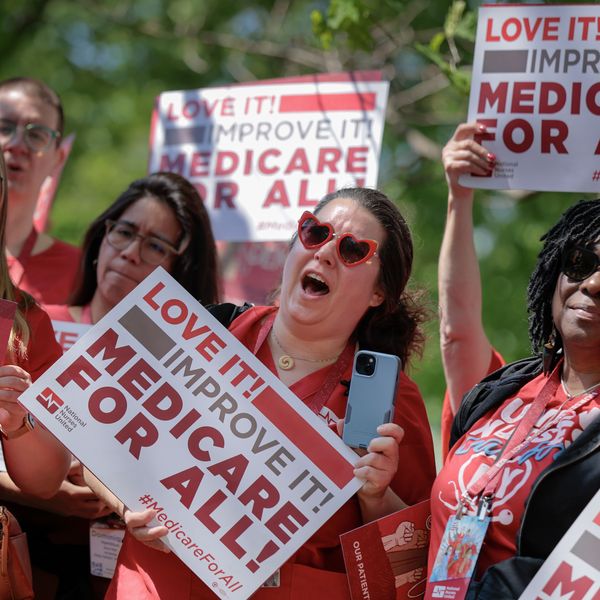Spending is Not Growth: The Case Against GDP
It is easy to fall under the misconception that GDP is a reliable indicator of economic growth or of a country's well-being

One of the core problems with GDP is that it only adds. That is, GDP calculates any kind of spending as improving the health of an economy--a limitation that is clearly problematic.
As an example, how does GDP account for an economic disaster? The oil spill British Petroleum (BP) caused in the Gulf of Mexico in 2010 is a perfect example of the limitations of GDP. The transactions made to replace assets damaged or destroyed by such a disaster are not differentiated in final GDP scores, to the tune of about $20 billion in the 2010 oil spill.
Not to mention, an oil spill negatively affects the local economy in so many ways that GDP does not account for: for instance, fishermen losing their jobs and livelihood, restaurants temporarily closing or going out of business entirely, and tourism in the area rapidly declining. Moreover, the local ecosystem is completely thrown off balance and damaged, sometimes irreparably, for many years to come.
Hurricane Katrina provides another significant example of GDP's limitations: With about $250 billion in cleanup costs, the hurricane's effect on GDP certainly did not reflect the well-being of New Orleans citizens or economy in the years following the disaster. Thousands of former residents were permanently displaced, and the city is still struggling to approach pre-Katrina population figures. As of 2012, the city has reached only 80 percent of its former population.
Although Louisiana's GDP initially dropped off after the disaster, as the cleanup effort began it quickly began to climb, approaching pre-disaster numbers within only five years. Yet while the state's GDP was rapidly recovering, the city itself was not: Alyson Plyer, the chief demographer at the Greater New Orleans Community Data Center, estimated in 2010 that the city was only "five years into a 10- to 20-year recovery project." Going by GDP alone, however, the disaster seemed to be a hiccup rather than a monumentally disruptive catastrophe.
Economic disasters like the BP oil spill and Hurricane Katrina demonstrate the inherent limitations of GDP as a measurement of economic growth, health, or the well-being of citizens in an economy. GDP scores are simply not built to accommodate these negative externalities that affect people, wildlife, ecosystems, and communities.
However, alternative methods have been developed to more accurately account for these externalities. The Genuine Progress Indicator (GPI), developed by ecological economists in the 1980s and 90s, is much better equipped to measure activities that diminish financial and social well-being and negatively impact the environment. GPI, for instance, quantifies externalities such as ozone depletion or loss of wetlands as harmful costs--whereas GDP is not able to differentiate these harmful costs from positive economic activity so long as dollars are being spent.
Some states have already started to move away from GDP because of its inherent limitations: Despite early opposition, Maryland--in conjunction with the University of Maryland's Center for Integrative Environmental Research--developed and implemented a GPI tool for policy-makers in early 2010. The tool, which measures how indicators of well-being interact with and affect each other, uses 26 different indicators from economic, environmental, and social categories to calculate GPI.
Maryland's successful adoption of GPI will hopefully encourage other states to follow suit and develop similar measurements for a more sustainable economic future--one that values its citizens and the environment more highly than the dollar.
An Urgent Message From Our Co-Founder
Dear Common Dreams reader, The U.S. is on a fast track to authoritarianism like nothing I've ever seen. Meanwhile, corporate news outlets are utterly capitulating to Trump, twisting their coverage to avoid drawing his ire while lining up to stuff cash in his pockets. That's why I believe that Common Dreams is doing the best and most consequential reporting that we've ever done. Our small but mighty team is a progressive reporting powerhouse, covering the news every day that the corporate media never will. Our mission has always been simple: To inform. To inspire. And to ignite change for the common good. Now here's the key piece that I want all our readers to understand: None of this would be possible without your financial support. That's not just some fundraising cliche. It's the absolute and literal truth. We don't accept corporate advertising and never will. We don't have a paywall because we don't think people should be blocked from critical news based on their ability to pay. Everything we do is funded by the donations of readers like you. Will you donate now to help power the nonprofit, independent reporting of Common Dreams? Thank you for being a vital member of our community. Together, we can keep independent journalism alive when it’s needed most. - Craig Brown, Co-founder |

One of the core problems with GDP is that it only adds. That is, GDP calculates any kind of spending as improving the health of an economy--a limitation that is clearly problematic.
As an example, how does GDP account for an economic disaster? The oil spill British Petroleum (BP) caused in the Gulf of Mexico in 2010 is a perfect example of the limitations of GDP. The transactions made to replace assets damaged or destroyed by such a disaster are not differentiated in final GDP scores, to the tune of about $20 billion in the 2010 oil spill.
Not to mention, an oil spill negatively affects the local economy in so many ways that GDP does not account for: for instance, fishermen losing their jobs and livelihood, restaurants temporarily closing or going out of business entirely, and tourism in the area rapidly declining. Moreover, the local ecosystem is completely thrown off balance and damaged, sometimes irreparably, for many years to come.
Hurricane Katrina provides another significant example of GDP's limitations: With about $250 billion in cleanup costs, the hurricane's effect on GDP certainly did not reflect the well-being of New Orleans citizens or economy in the years following the disaster. Thousands of former residents were permanently displaced, and the city is still struggling to approach pre-Katrina population figures. As of 2012, the city has reached only 80 percent of its former population.
Although Louisiana's GDP initially dropped off after the disaster, as the cleanup effort began it quickly began to climb, approaching pre-disaster numbers within only five years. Yet while the state's GDP was rapidly recovering, the city itself was not: Alyson Plyer, the chief demographer at the Greater New Orleans Community Data Center, estimated in 2010 that the city was only "five years into a 10- to 20-year recovery project." Going by GDP alone, however, the disaster seemed to be a hiccup rather than a monumentally disruptive catastrophe.
Economic disasters like the BP oil spill and Hurricane Katrina demonstrate the inherent limitations of GDP as a measurement of economic growth, health, or the well-being of citizens in an economy. GDP scores are simply not built to accommodate these negative externalities that affect people, wildlife, ecosystems, and communities.
However, alternative methods have been developed to more accurately account for these externalities. The Genuine Progress Indicator (GPI), developed by ecological economists in the 1980s and 90s, is much better equipped to measure activities that diminish financial and social well-being and negatively impact the environment. GPI, for instance, quantifies externalities such as ozone depletion or loss of wetlands as harmful costs--whereas GDP is not able to differentiate these harmful costs from positive economic activity so long as dollars are being spent.
Some states have already started to move away from GDP because of its inherent limitations: Despite early opposition, Maryland--in conjunction with the University of Maryland's Center for Integrative Environmental Research--developed and implemented a GPI tool for policy-makers in early 2010. The tool, which measures how indicators of well-being interact with and affect each other, uses 26 different indicators from economic, environmental, and social categories to calculate GPI.
Maryland's successful adoption of GPI will hopefully encourage other states to follow suit and develop similar measurements for a more sustainable economic future--one that values its citizens and the environment more highly than the dollar.

One of the core problems with GDP is that it only adds. That is, GDP calculates any kind of spending as improving the health of an economy--a limitation that is clearly problematic.
As an example, how does GDP account for an economic disaster? The oil spill British Petroleum (BP) caused in the Gulf of Mexico in 2010 is a perfect example of the limitations of GDP. The transactions made to replace assets damaged or destroyed by such a disaster are not differentiated in final GDP scores, to the tune of about $20 billion in the 2010 oil spill.
Not to mention, an oil spill negatively affects the local economy in so many ways that GDP does not account for: for instance, fishermen losing their jobs and livelihood, restaurants temporarily closing or going out of business entirely, and tourism in the area rapidly declining. Moreover, the local ecosystem is completely thrown off balance and damaged, sometimes irreparably, for many years to come.
Hurricane Katrina provides another significant example of GDP's limitations: With about $250 billion in cleanup costs, the hurricane's effect on GDP certainly did not reflect the well-being of New Orleans citizens or economy in the years following the disaster. Thousands of former residents were permanently displaced, and the city is still struggling to approach pre-Katrina population figures. As of 2012, the city has reached only 80 percent of its former population.
Although Louisiana's GDP initially dropped off after the disaster, as the cleanup effort began it quickly began to climb, approaching pre-disaster numbers within only five years. Yet while the state's GDP was rapidly recovering, the city itself was not: Alyson Plyer, the chief demographer at the Greater New Orleans Community Data Center, estimated in 2010 that the city was only "five years into a 10- to 20-year recovery project." Going by GDP alone, however, the disaster seemed to be a hiccup rather than a monumentally disruptive catastrophe.
Economic disasters like the BP oil spill and Hurricane Katrina demonstrate the inherent limitations of GDP as a measurement of economic growth, health, or the well-being of citizens in an economy. GDP scores are simply not built to accommodate these negative externalities that affect people, wildlife, ecosystems, and communities.
However, alternative methods have been developed to more accurately account for these externalities. The Genuine Progress Indicator (GPI), developed by ecological economists in the 1980s and 90s, is much better equipped to measure activities that diminish financial and social well-being and negatively impact the environment. GPI, for instance, quantifies externalities such as ozone depletion or loss of wetlands as harmful costs--whereas GDP is not able to differentiate these harmful costs from positive economic activity so long as dollars are being spent.
Some states have already started to move away from GDP because of its inherent limitations: Despite early opposition, Maryland--in conjunction with the University of Maryland's Center for Integrative Environmental Research--developed and implemented a GPI tool for policy-makers in early 2010. The tool, which measures how indicators of well-being interact with and affect each other, uses 26 different indicators from economic, environmental, and social categories to calculate GPI.
Maryland's successful adoption of GPI will hopefully encourage other states to follow suit and develop similar measurements for a more sustainable economic future--one that values its citizens and the environment more highly than the dollar.

